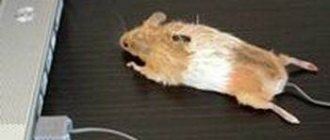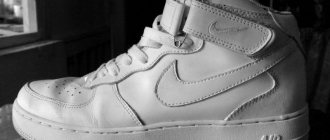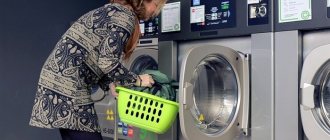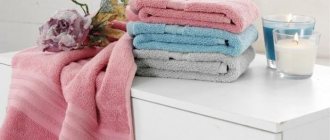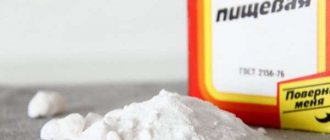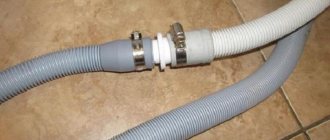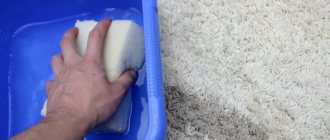What is this text about? In this text we will answer the following questions: how to wash a musical soft toy how to wash musical soft toys how to wash soft toys with music How to properly wash soft toys at home: by hand or in a machine?
Soft toys are faithful companions for children. But not only children love them. Even adults often become passionate and collect teddy bears, dogs... They are soft and cuddly. Their presence in the house creates a relaxing atmosphere. But... It's not just about game items. They are also collectors of dust and other pests, particularly mites. Therefore, you need to know how to wash soft toys in a washing machine and by hand. They must be cleaned according to contamination or once every 3 months.
Choosing a detergent
If you want to clean the plush with a strong disinfectant (this idea especially arises during quarantine in the kindergarten), do not do it! Apart from soap and vinegar diluted with water, the use of other disinfectants and chemicals is not recommended. Toxic substances contained in cleaning products can leave a harmful coating on the surface and vapors in the atmosphere. Children are more sensitive to these substances than adults and react more quickly to chemical residues. This may trigger allergic reactions.
Important! There is no need to wash a healthy child’s things with antibacterial soap or various disinfectants. They destroy the baby's natural microflora, and pathogenic microorganisms are more likely to colonize the body surface.
Purchasing a special detergent for delicate fabrics and wool is not overkill. Conventional products are alkaline and can damage soft surfaces. This especially applies to felt and fleece products (such as from).
Are they dirty?
Watch a child play with a teddy bear, bunny or rag doll.
He not only rolls the toy on the floor, there are also hugs and kisses, and a taste test. What adds to the problem is that no matter how cleanly you tidy your apartment, the ubiquitous dust still penetrates the premises and settles on surfaces. It is not always possible to notice how gradually a toy loses its brightness of color under a layer of dust.
Children spend a lot of time with soft toys, so these products will definitely need to be washed.
In addition, children often do not let go of their favorite soft toys for literally a minute. This means that the soft playmate will probably swim in a puddle, roll around in the sandbox and smear himself on the grass. As you can see, periodic washing is simply necessary for such toys. Otherwise, the germs along with the dirt will transfer to the child.
Soft toys should be washed as they become dirty. If your child really loves such an item, then washing should be done at least every 2-3 weeks. Before you start cleaning, look at the toy label: care instructions are indicated there.
Unfortunately, dust mites are permanent residents of soft toys, and they can cause allergies in a child.
Choosing a washing method
Felt and fleece bears can be machine washed on a delicate cycle. If there are any care restrictions, such as a prohibition on machine washing, do not neglect them. Otherwise, you risk damaging the fabric or filling. A washed toy must be dried thoroughly. Although most moms praise tumble drying, it is not recommended by a number of manufacturers.
You can wash children's toys with soap. Create a soapy lather in water, soak a cloth in it, and clean by hand. Use only white or light-colored cloth; colored materials may stain the surface being cleaned. This toy wash is most suitable for items with musical mechanisms, talking bears, etc.
You need to wash soft toys in a washing machine or by hand, following a number of rules:
- Toys with balls inside (relieving stress, developing motor skills) are cleaned only superficially - with a cloth soaked in soapy foam. It is not advisable to wash anti-stress toys in a washing machine. Even strong seams in the drum can break.
- Dark stains on toys can be wiped off with a sponge soaked in diluted alcohol or dish gel. This must be done before washing.
- Products made from plush yarn, knitted fabric and velor, knitted toys (amigurumi) without accessories, balls, batteries, plastic or silicone parts can be machine washed. In this case, it is advisable to use a washing net to prevent damage to the drum.
- Please note the importance of rinsing thoroughly to ensure no detergent is left on the plush.
Dry cleaning
These methods do not involve the use of water. Any contact with water is prohibited, as if you wash it, you can damage the soft toy or leave stains on it.
Soda for stains
Baking soda is known for its cleansing and neutralizing properties. Using this method will help wash the toy and kill any germs contained in it. No water is required with this method.
To clean with soda you will need: a brush, 100 grams of soda, a garbage bag, a cotton towel.
Cleansing must be carried out following step-by-step instructions:
- Before washing the product, if possible, remove visible dirt from the surface of the fur of a children's toy, a vacuum cleaner is suitable, but you should not use a regular attachment, but for furniture.
- Pour baking soda into the bag. Place the toy in it so that you can tie it tightly later.
- Shake in your hands. This is necessary so that all the soda is distributed on the object of fun. Thus, the soda gets into the villi, between the fur.
- Leave for one and a half to two hours.
- Lightly wet the towel - this can be done with a spray bottle.
- Remove the trinket from the bag and wrap it in a towel.
Important! If the product has stubborn stains, then this method may not be effective. But if you use this method several times and use starch, you can achieve good results and completely clean the toy even from difficult stains.
Starch for stains
The execution of the method with starch is very similar to the procedure with soda, there are only a few changes.
You will need for cleaning: 100 grams of starch, a brush, oilcloth material, cloth for placing under the work surface, a bag.
The procedure should be carried out carefully, because starch can get into the nose and lungs. To prevent this, you can open a window or clean outside.
Note! Contact with water is prohibited. Water with starch can leave white stains on the toy, which will be very difficult to clean.
Clean the toy according to the instructions:
- Place a cloth under the work surface.
- Place a soft product on it.
- Rub starch into the pile.
- Set aside for a quarter of an hour.
- Remove starch with a brush.
- Wrap in a bag and leave the soft fun in the freezer.
Additional Information! This method will not kill germs. But if you leave the product in the freezer for two days, the pathological formations may die. Also, direct sunlight and UV radiation negatively affect microbes.
Machine washable
Recommendations for proper machine washing:
- Be sure to read the label on the product. Sometimes cleaning in the washing machine is not recommended.
- Check if there is a music box, battery, or bead filling inside. Remove the device from a toy with music or similar mechanism.
- Place the product in the washing net.
- Use delicate cycle, warm or cold wash. But avoid hot water. It can dissolve glue.
- Use baby detergent.
- Wash at 30–40ºС. If this temperature is exceeded, there is a risk of damage to the product.
- Do not try to force a large toy into the car. You may damage it.
- After rinsing, do not wring out the product; dry it with a terry towel.
- Dry flat or hung.
What and how to wash
Allergists recommend using the following products:
- special powders, gels and conditioners for washing children's clothes;
- baby soap;
- laundry soap;
- any shampoo.
To wash soft toys, use special powders for children's clothes.
If the water in your home is too hard, give preference to washing gels and do not forget to add conditioner.
Many housewives wash soft toys only by hand. The instructions for the product or the label on it will tell you whether machine washing is allowed. This will make your task much easier.
Most toys can be safely machine washed on a delicate cycle.
Exclusively manual cleaning is used in cases where:
- the toy is sewn from heterogeneous materials;
- there are glued parts;
- The product has a nose, eyes, and mouth made of painted plastic that may be scratched or rubbed off when machine washed;
- sawdust, rice, buckwheat husks, straw, and cotton wool were used to fill the toy;
- the product has a long silky pile that can mat and lose its shine;
- The toy is very soft, prone to deformation and stretching.
When machine washing such products, you may encounter irreparable problems. Fabrics of different types can stretch or shrink unevenly, the filling can become damp and crumpled (which will lead to severe deformation of the toy), and the cute face will lose all its charm.
Most soft toys should be flattened and hung to dry after washing.
Important! Some toys are afraid of water and can only be dry cleaned.
The features of cleaning soft toys from contamination depend not only on the ability to wash by hand, in a machine, or using other cleaning methods. There are many nuances that need to be taken into account.
To prevent your child’s pet from losing its shape after washing, it should be straightened out and dried in a warm place, hung vertically or simply left “sitting” on the dryer.
For knitted toys, hanging is unacceptable: the yarn, regardless of its composition (especially if it is wool), shrinks when washed and can stretch when drying, which will lead to deformation of the product. Therefore, dry knitted toys in a horizontal position on a laid out terry towel.
Note! If the toy fades during washing, this is a sure sign of the use of low-quality dyes. They may contain harmful substances. It is better not to give such a toy to the child at all.
Handwash
You can wash your teddy bear in a basin or bath with soapy water. When cleaning, follow the symbols on the label to indicate the appropriate water temperature. If you are unsure whether an item is machine washable, clean it by hand.
Hand wash procedure:
- Pour water (cold or slightly warm) into a bowl.
- Add a little liquid soap (about 1 teaspoon) or baby shampoo (eg Johnson).
- Do not use too much detergent, it may disturb the color and cause allergies.
- Wet the toy.
- Leave for 15-30 minutes.
- Wash the product carefully.
- Remove washable stains with your hand or a sponge; for stubborn stains, use vinegar.
- Rinse off any remaining soap.
- Squeeze gently.
- Use a towel to absorb excess water (place the stuffed animal between the towels and press down).
When hand washing, it is important to wring the toy thoroughly to get as much water out of it as possible. It is not recommended to place it in the dryer. It may lose shape and size. It is best to dry outside. But beware of direct sunlight, which can disturb the colors.
How to clean toys made of different materials
From felt
It is preferable to clean such products with soap and foam. It is applied to the toy and left for a while for a better effect. Then the residue is removed with a damp cloth.
Made from plush
Such products look attractive, but collect a lot of dust and are difficult to clean. Plush toys can be washed by hand, after first checking whether the toy is fading.
How to clean a dirty plush toy at home: place the toy in a basin with water and powder, soak it for half an hour, then carefully wash and dry it.
From felt
In this case, only dry cleaning, delicate damp wiping with foam or gentle hand washing without spinning is appropriate. Otherwise, the item may shrink and pills will form on it.
Severe types of pollution
It happens that it is impossible to return the original purity of a product using one of the methods described above. How to clean dirt from a soft toy?! Heavy dirt can only be removed with a vacuum cleaner and wet cleaning.
Advice! If stains cannot be washed off with soapy water, use a stain remover.
Washing large soft toys
You can wash large soft toys in the same way as small ones. In addition, it is recommended to vacuum them often using a special furniture brush. Be careful with sewn or glued additions (beads, buttons). They are often held on by silicone; If used frequently with a vacuum cleaner, they may come off.
Large toys can be cleaned with upholstery foam instead of washing. If this is an expensive product, first check the effect of the product (whether it disturbs the color, etc.). First, vacuum the soft surface, apply foam to it with a brush or sponge, leave it on (see instructions for using the substance), vacuum again, and clean with a brush.
Important! When cleaning large toys, special cleaning foam can be replaced with soap foam.
How to disinfect
Regular cleaning of toys only removes dirt, but does not destroy germs and pathological organisms. There are several ways to disinfect things:
- Steam generator. Treating a toy with hot steam allows you to destroy types of bacteria and viruses such as tuberculosis, influenza A, staphylococci, E. coli, and fungal organisms.
- The ultraviolet radiation of the lamp will provide protection against dust mites, various viruses, and bacteria. When the lamp is working in the room (the duration of operation is no more than an hour), there should be no one in it.
- Cold treatment. To do this, just put the toy in the freezer for a couple of days - the pathological formations will be destroyed.
Without paying attention to the cleanliness of your home, the risk of contracting infectious diseases increases, since its sources remain on toys.
Even if they are clean at first glance, these products are “dust collectors,” especially if they sit without cleaning for several months or years. To protect against diseases and keep your home clean, it is enough to wash all toys once every three to four months, then they will bring only positive emotions. Rate this post
Washing with a musical mechanism
It is recommended to wash musical soft toys (products with a musical mechanism) by hand with soapy water and a brush or sponge. When cleaning, be careful not to get the device wet, otherwise the toy will stop working. This will cost you a lot of tears, screaming, and the purchase of a new, working toy.
If there are batteries inside (they are present in talking toys), before cleaning, carefully open the seam and remove them. Sew the torn area with a large stitch (to prevent the filling from falling out), clean the product in a suitable way, and dry it. Insert the batteries into place and sew the seams well.
Getting rid of ticks from soft toys using frost
If your toys are so old that they still remember your graduation party, then you can be sure that dust mites live in them. Don't panic, don't rush to throw them out of the window - the cold will help deal with ticks!
- We wash small toys at temperatures above 60 degrees.
- If you can’t wash it, put it in a bag and put it in the freezer overnight. Or even two – just to be sure.
- We take the large toy out onto the balcony, vacuum it thoroughly and leave it in the cold for a night or two. If winter is far away, put the toy in the closet - a child should absolutely not play with a toy infested with dust mites.
Don't "launch" toys. Regular cleaning and washing of toys will preserve not only their appearance, but also, most importantly, the health of your child.
Main types
The world of toys is wide and varied, like a child’s imagination. There you can meet all kinds of flora and fauna, cartoon and fairy tale characters, even representatives of the automotive industry.
They can be divided into several conditional groups:
- educational, include soft books, rugs and small-sized construction sets;
- musical, thanks to built-in mechanisms they produce a certain set of words, sounds or melodies;
- standard ones, such as stuffed animals, birds or fish;
- multifunctional, having in their arsenal sound, light or other types of effects at the same time.
The world of toys is wide and diverse.
The selected varieties reflect only part of the world of soft toys. All of them can still be divided by size, relation to different cultures and countries, and materials of manufacture.
Children, as a rule, do not pay attention to these subtleties, limiting themselves to a simple choice: either like it or not. And regardless of the type, all plush products need to be cleaned.
Toys for newborns
In babies under one year of age, immunity is not fully formed. It is necessary to handle everything with which the child has direct contact. This does not mean that the fur bear should be boiled after each fall on the floor. With regular wet cleaning, the floor will be, if not sterile, then clean.
It is enough to adhere to the basic rules for the hygiene of your baby’s plush companions:
- Immediately after purchase, you should read the information on the tag. After this, it will become clear whether machine and hand washing is possible, or dry cleaning only.
- If the product can be washed, you should use baby powder or laundry soap.
- In some interactive models, it is possible to remove the mechanism and then return it to its place after washing.
- To maintain the richness of the colors and the softness of the pile, you can use baby fabric conditioner.
- Electronic mechanisms are disinfected with alcohol or an antibacterial solution, such as chlorhexidine.
- Finally, the toys are dried; you can speed up the process with a hairdryer.
ARTICLE FOR YOU
How to wash a baseball cap and cap: in the washing machine, by hand, tricks for drying and care
How to care for soft toys
After such preparation, you can safely give the new comrade to the child. With further use, fluffy dust collectors should be washed at least once a week. Otherwise, there is a risk of dust mites appearing in them.
And it, in turn, can provoke various types of allergies and respiratory diseases, including bronchial asthma.
Weekly treatments include:
- cleaning plastic and wooden parts with a damp cloth;
- processing lint or fabric with a vacuum cleaner;
- wet processing of pile or fabric.
By carrying out these simple manipulations once a week, you can protect your child from the negative effects of dust.
Regardless of the frequency of cleaning your plush friends, their abundance in a newborn’s crib poses a certain danger. While playing, the baby can bury his nose in them and suffocate. Therefore, the constant presence of soft toys in the baby's sleeping area is not recommended.
If there is a music block
Surely, among the collection of soft animals there will be those that tell your child fairy tales or sing funny songs. Such a toy often becomes the most favorite, because you can talk to it, inventing new stories. This means she will need cleaning more often. But how to carry it out so that the toy does not shut down forever when water gets into the electronic device?
The musical block in many soft toys is made in the form of a small rectangular box and sewn or inserted into a pocket with Velcro
If there is very little dirt, you can easily deal with it manually. Dissolve the detergent in water (about 1 tablespoon per 1 cup or according to the instructions on the label), apply a little solution to a soft brush or sponge and wipe the product from top to bottom, removing dirt. Then change the soap solution to clean water and repeat the treatment.
More serious contamination will require more work.
- Feel the toy, find the place where the electronics are located. Open the seam closest to the device.
- Carefully remove the box containing the electronic device.
Just in case, at the same time check whether the battery can be replaced and whether this is necessary. If yes, then it is better to replace it at this stage.
- Mend the seam and wash the toy. Depending on the characteristics of the product, you can do this in an automatic washing machine or manually.
- Dry the toy thoroughly, then open the seam again. Replace the electronics box. Select threads of a suitable color and carefully mend the seam.
If you do everything right, the toy will still entertain your child as if it were new.
Important Tips
The anti-stress toy must be washed taking into account the following recommendations:
- To test the product for color fastness, it must be moistened and wrapped in a clean white cloth. If after 5-10 minutes stains appear on it, then you need to wash the toy separately from other things and only at low temperatures.
You can get rid of an unpleasant odor using baking soda.
To do this, place the product in a plastic bag, pour this food additive into it and shake it several times. Leave the toy inside the bag for a day. It is then removed and cleaned of powder. Soda perfectly absorbs foreign odors and destroys germs.- White and colored toys cannot be washed in the same water, as they may fade. For dyed fabrics, do not use detergents containing bleaching particles.
- It is prohibited to wash light-colored items using products containing chlorine or other aggressive components.
- To disinfect a toy, you can treat it with an ultraviolet lamp. Do not boil or wash it in hot water. All fabric items must undergo mandatory disinfection after a sick person has interacted with them.
The toy is not squeezed or twisted. To make it dry faster after washing, you can wrap it in a soft, dry cloth and press down lightly. This will get rid of excess liquid.

